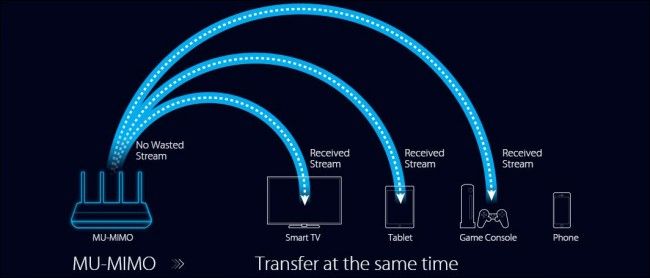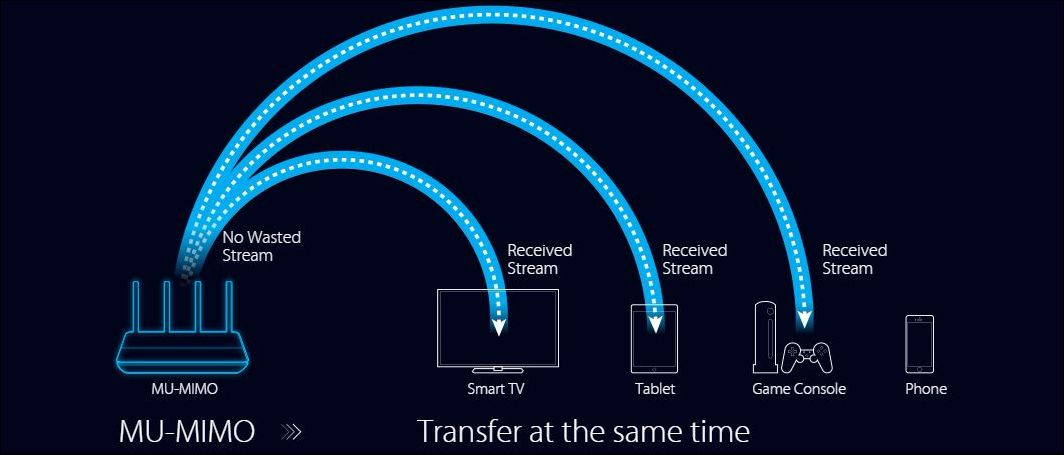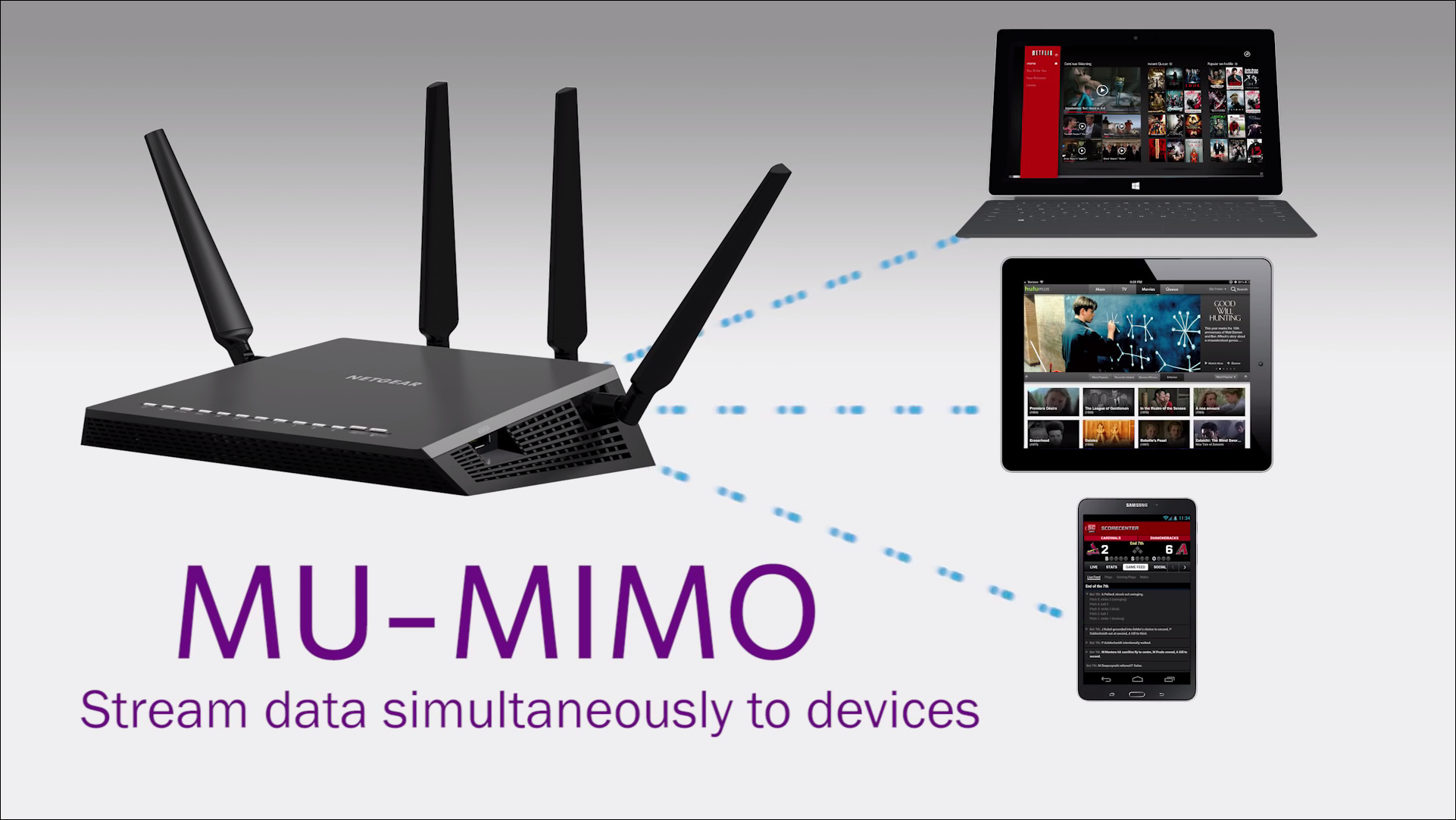More and more, the internet becomes central to everything we do at home. Watching movies, playing video games, and video chatting with family all require constant access. But with so much extra bandwidth necessary to push data to your wireless laptops, desktops, streaming devices and Smart TVs, will the routers of today be able to handle the demands of tomorrow?
Enter MU-MIMO technology, a new feature that our soon-to-be overtaxed routers will need to evenly divide bandwidth among your devices. But is MU-MIMO currently worth the cost? Can your household even take advantage of everything it has to offer?
What Is MU-MIMO?
"MIMO" stands for "Multiple-Input, Multiple-Output", and it refers to the way bandwidth is broken up by a router and pushed to individual devices. Most modern routers use "SU-MIMO", or "Single User, Multiple-Input, Multiple-Output". With these routers, only one device can receive data at any given time. This means that if you have one person watching Netflix and another watching Youtube, if you were to start both those streams at the exact same time, one device would get priority while the other had to wait until the first had buffered a few bits of data for itself.
Usually, you won't notice a slowdown. Even though SU-MIMO routers can only open up one stream at a time, they do so in very rapid succession, which to the naked eye looks like a solid stream of data. To borrow an analogy, think of it like a Pez dispenser strapped to a carousel: everyone standing around the circle is eventually going to get a piece of candy, but the carousel still needs to make one full rotation before all the members of the network are satisfied.
"MU-MIMO" routers, on the other hand ("Multiple User, Multiple-Input, Multiple-Output") are able to break up this bandwidth into separate, individual streams that each share the connection evenly, no matter the application. MU-MIMO routers come in three flavors: 2x2, 3x3, and 4x4, which refers to the number of streams that they can create for each device in your household. This way, the MU-MIMO carousel can simultaneously send Pez flying in four directions at once. Without getting too technical, this is like each device getting its own "private" router, up to four total in 4x4 MU-MIMO loadouts.
The main benefit here is that instead of each stream being periodically (albeit very, very briefly) interrupted by the time it takes for the carousel to spin around once, a MU-MIMO router can keep its signal constant for those four devices, and fairly distribute the bandwidth to each without compromising the speed of any of the others at the same time.
The Drawbacks of MU-MIMO
All this sounds great, right? It is, but as with most network-related features, there's one big drawback: in order for MU-MIMO to actually work, both the router and the receiving device need to have full MU-MIMO compatibility in order to communicate with one another.
Currently, MU-MIMO routers are only able to broadcast over the newer 802.11ac wireless protocol, a signal that many devices haven't been updated to decode just yet. Even fewer devices actually have MU-MIMO. As of this writing, there are a only few laptops that have MU-MIMO-ready wireless receivers, and a select number of smartphones and tablets that come with a Wi-Fi chip that knows what to do with a MU-MIMO stream (like the Microsoft Lumia 950).
That means that even if you drop the extra coin on a router with MU-MIMO capability (usually about $50 more, depending on the model), it will likely be a number of years before every device in your home is able to use the feature as intended. Yes, you can buy a compatible MU-MIMO wireless USB dongle for desktops or laptops, but they're quite a bit more expensive than regular SU-MIMO receivers, which could prevent some users from taking the plunge.
Also, there's the issue of maxing out your available streams. Right now MU-MIMO tops out at four streams, which means that if you add a fifth device to the network, it will have to share a stream with another device in the same way a SU-MIMO router would, which sort of defeats the purpose.
Last, there's the fact that MU-MIMO broadcast signals work on a directional basis, and can only be split up when devices are in different locations around the house. For example: if you're streaming a movie to the living room on the TV and your kids are connecting their Nintendo 3DS on the couch only a few feet away, by default both devices will be forced to share the same stream. Because of the way that MU-MIMO streams work, there's currently no workaround for this, which means if you live in a small apartment or do most of your browsing from the same room, MU-MIMO won't provide any extra benefits over SU-MIMO.
Do I Need It On My Router?
If you have four or fewer MU-MIMO compatible devices connecting simultaneously from opposite ends of the house, then a MU-MIMO router could be a good pick for you.
For example, if you've got a hardcore gamer in one room sharing a connection with someone else who's trying to watch a 4K Netflix stream in another, MU-MIMO could be worth it in the long run. Of course, this would only make sense if both the streaming device and the laptop have the ability to decode a MU-MIMO signal at all.
However, if you're still on DSL and don't even have that much bandwidth to go around in the first place, no router (MU-MIMO or otherwise) will be able to increase the base download/upload speeds you get from your ISP. MU-MIMO is simply a bandwidth management tool, one that only works within the parameters of the speed you're already getting from the jack coming out of the wall.
For the time being, MU-MIMO will probably be reserved for packed households with devices that demand a lot of individual bandwidth, and do so in separate rooms. Otherwise, the increased cost of the newer technology will be prohibitive for the standard buyer until these types of usage patterns become more common and router manufacturers can bring the price down.
There may not be many devices that can take advantage of it just yet, but that doesn't mean MU-MIMO routers aren't worth a look. No, they don't really solve any problems for today's web users, and there's still no indication that the MU-MIMO protocol will see widespread adoption in mainstream devices anytime before 2017. But for anyone who can take advantage of it (like the three people who bought a Lumia 950), it's still a solid feature that could potentially future-proof your household for the bandwidth needs of tomorrow.




